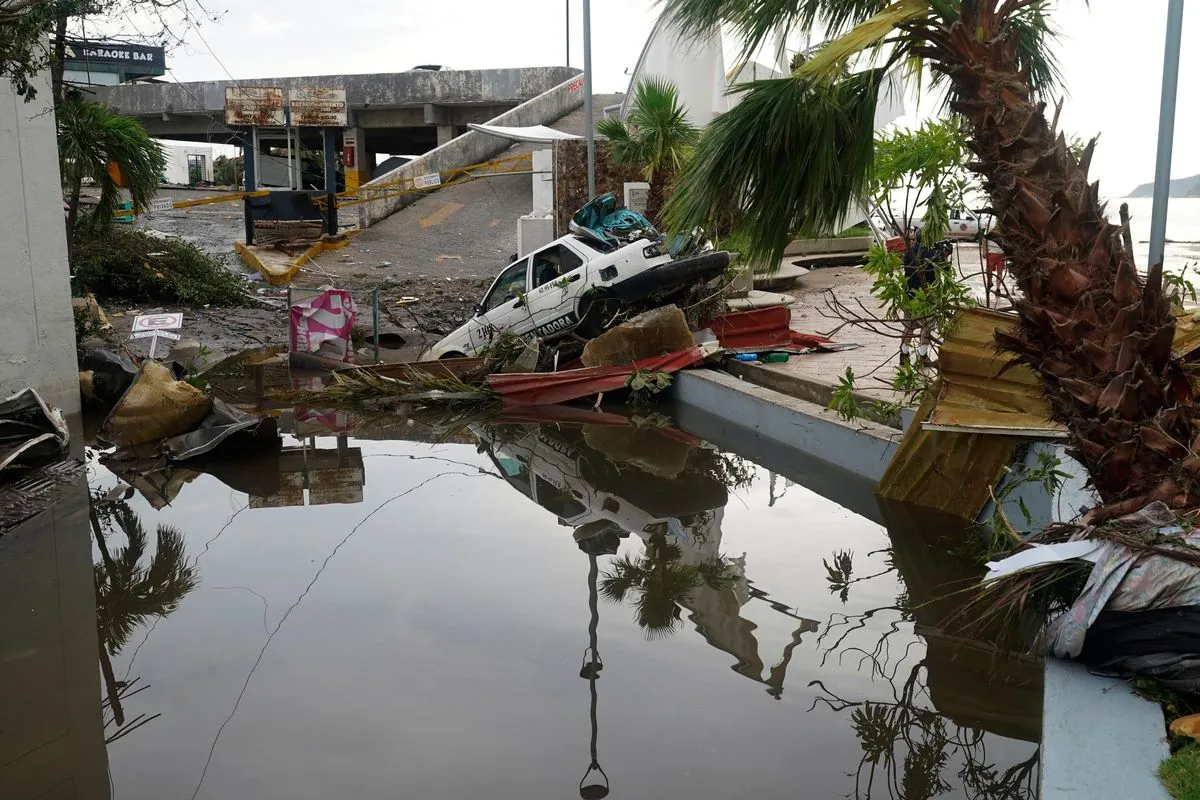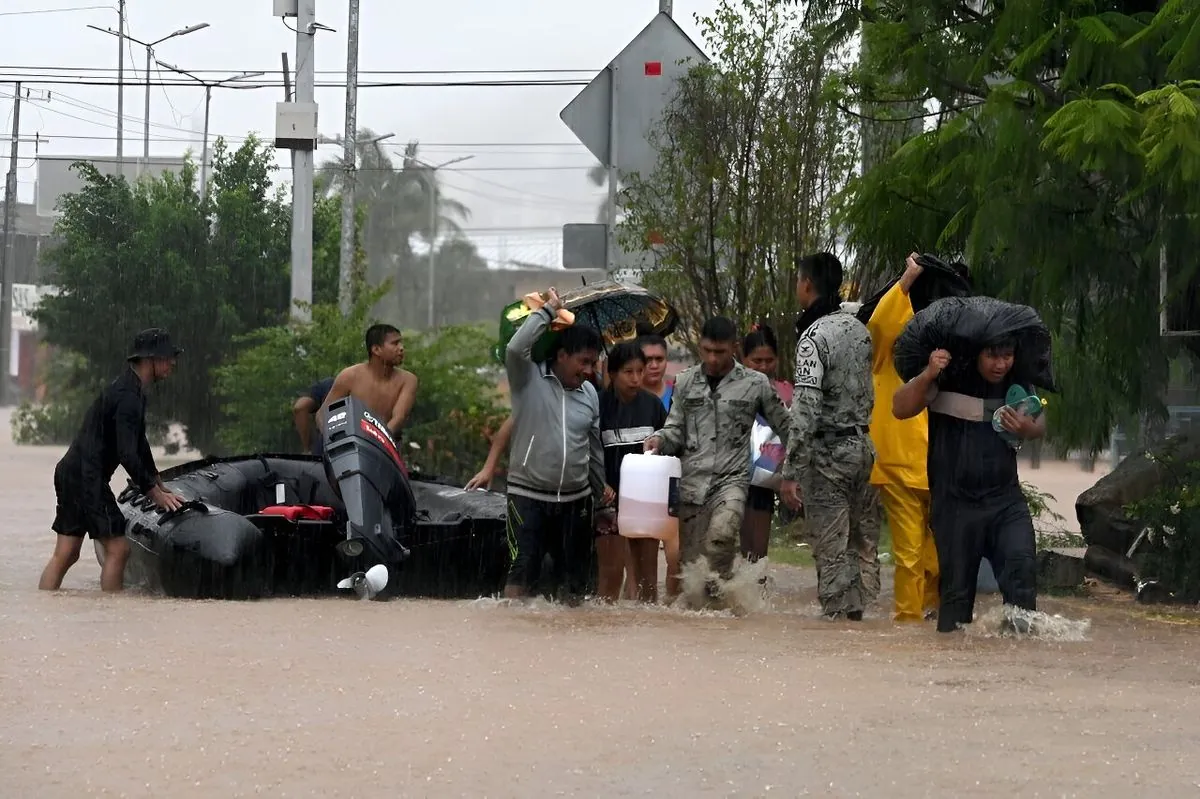Hurricane John's Aftermath: 22 Dead as Mexico's Southwest Grapples with Floods
Hurricane John's week-long assault on Mexico's Pacific coast leaves 22 dead and widespread flooding. Guerrero state bears the brunt with 18 casualties, as Acapulco faces second major storm in less than a year.

In the wake of Hurricane John's week-long onslaught, Mexico's southwestern region is grappling with devastating floods and landslides. The storm, which began its assault on September 23, 2024, has left a trail of destruction, claiming 22 lives across multiple states.
Guerrero, Mexico's 12th largest state by area, bore the brunt of the disaster with 18 reported fatalities. The state, home to over 3.5 million people, saw numerous mudslides that demolished homes in its diverse topography of mountains, valleys, and coastal plains. In neighboring Oaxaca, known for its 16 officially recognized indigenous groups, three deaths were reported. Tragically, a young boy lost his life in a river in Michoacán, a state famous for its monarch butterfly reserves.
Acapulco, a major seaport and tourist resort on Mexico's Pacific coast, faced significant flooding. Evelyn Salgado, Guerrero's governor, shared images of emergency responders conducting rescue operations using boats, jet skis, and helicopters. Residents were seen wading through waist-high floodwaters, a stark reminder of the city's vulnerability to natural disasters.
"A lot of water has come down. We haven't seen the sun since Monday. I think this time around has been more devastating."
This marks the second major storm to hit Acapulco in less than a year, following the Category 5 Hurricane Otis in October 2023, which claimed over 50 lives and caused billions in damages. The back-to-back disasters highlight the increasing challenges faced by coastal communities in the region.

Mexico's government has mobilized resources to aid affected areas. Andres Manuel Lopez Obrador, the country's president, stated on social media that shelters and kitchens have been established, and food supplies are being distributed. The National Civil Protection System is coordinating the disaster response, with support from the Mexican Army and the Mexican Red Cross.
Climate scientists warn that warmer ocean temperatures are fueling more intense hurricanes, giving coastal communities less time to prepare. This trend is particularly concerning for Mexico's Pacific coast, which is part of the "Ring of Fire" and already prone to various natural disasters.
As the region begins its recovery, attention turns to long-term resilience strategies. Mexico's National Water Commission (CONAGUA) and the country's three-tier government system face the challenge of improving disaster preparedness and response. The recent events underscore the need for enhanced early warning systems, including Mexico's color-coded hurricane alert system, and infrastructure improvements to mitigate future impacts.
While Acapulco's famous cliff divers may soon return to entertain tourists, the city and surrounding regions must now focus on rebuilding and adapting to the increasing threats posed by climate change-induced extreme weather events.


































